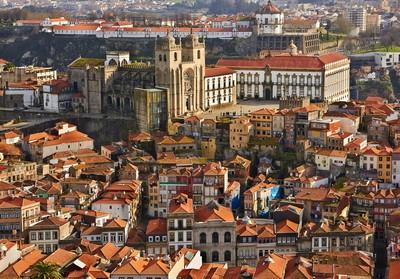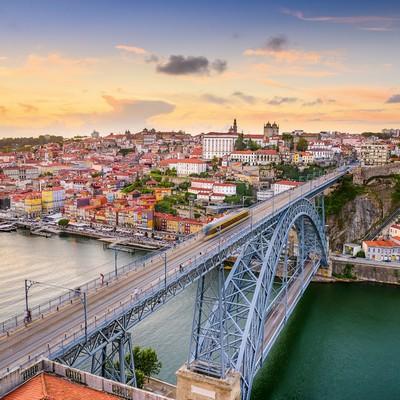
Second to none: Why Porto is my number one for a city break in Portugal
Zoe Williams
Lisbon: If you walk along the south banks of the Douro River in Vila Nova de Gaia, opposite Porto city, towards the sea, the scene will be classic Portugal for a while: a lot of waterside restaurants, a lot of grilled chicken, some stalls selling unlikely items made of cork (aprons?). A little further back are the showcase port houses: Sandeman, Fonseca, Taylor’s – we’ll come back to those.

The Guardian’s journalism is independent. We will earn a commission if you buy something through an affiliate link. Learn more.

Keep on walking westwards along the river, away from the pretty Dom Luís I Bridge and towards the sea, and you reach Afurada, a fishing village. It’s famous for people grilling fish in the street and because it’s apparently not possible to eat badly there, the fish being so fresh and all the restaurants so close together, they’re in a race to the top. Or do we just call that a race? A Margem restaurant has a funny, boxy front like an Amazon drop-point and serves incredible polvo à lagareiro (octopus, olive oil, potatoes and garlic).
Anyway, carry on walking: you’ll pass an estuary and you might see a white flamingo, but that will depend on the migration patterns for the time of year. You will reach Praia do Cabedelo do Douro, a sweet beach in a half-moon shape with water sports.
You could probably find all this information on the worldwide wondernet, but I can’t really get excited about a white flamingo unless I can see the light in the eyes of the person who has seen it. Some recommendations really have to be word of mouth. This is charm number one of a nation’s second city: people talk to you. How many times in Lisbon – or Berlin, Paris or London – have you had a sense that, welcome as you are, people have had enough of your tourist nonsense? It’s not that there’s anything wrong with you. It’s just that there are so many of you.

While the city (and the wider Porto district of which Vila Nova de Gaia is part) is often mentioned for its great value (a pint in the stunning Esplanada do Teleférico bar, with views over the Dom Luís I Bridge and into the historic old town on the other side of the river, was €4), Lisbon is actually cheaper, according to the Post Office’s annual city costs barometer.
But Porto has a less excitable property market, which means fewer chains, a more idiosyncratic atmosphere in the bars and restaurants, and a lot more chatting. Lara Salt, who runs Porto Feio, a bar right by the river, is the one who saw the white flamingo. She also has a passion for 90s grunge, despite being not yet born in its heyday, and I know that because so do I, and I hung out in Porto Feio quite a bit.
Porto has fewer chains, a more idiosyncratic atmosphere in the bars and restaurants, and a lot more chatting

There is space for difference, architecturally, in the second city. There’s heritage all right (the mad, melodramatic tiles of São Bento railway station; and Livraria Lello, the beautifully ornate bookshop) but Porto hasn’t been manicured down to the cuticles, and there is still room for dereliction, for artists in garrets.
As you leave the centro histórico and walk up to the Bonfim neighbourhood, it feels much more like Shoreditch in east London in the 20th century than the 21st – open studios crop up (though at random; you have to take your chances). Donau is a cafe that makes its own schnapps, but it’s also a collective that runs club nights and does linocut workshops to raise money for Gaza. In places, Porto is beautiful, geared up for leisure, everything angled towards a view of the waterfront, and none of these areas are further away from each other than a quarter of an hour stroll. In other places, it’s a working city where people live.
A country’s second city always has A Thing. Milan has fashion, Hamburg has its nightlife, Porto has port. The big houses loom spectacularly over Vila Nova de Gaia, so grand they look as if they might have their own militias. It is somehow unbelievable that you’re allowed in, let alone that once inside you can do what you like, treat it as an educational experience with a tour, or more like a bar. You can turn white port into more of a session drink by adding tonic. You can turn port into an everyday aperitif, rather than a special occasion digestif, by drinking tawny not vintage, starting earlier, and eating salted almonds with it. It’s still not really a lunchtime drink.
